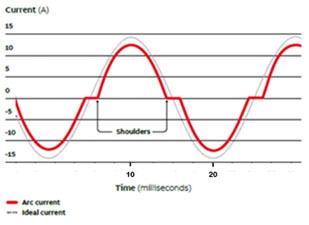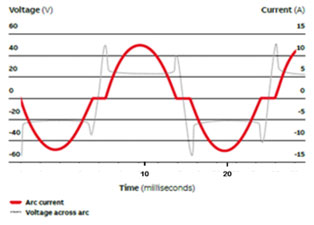Written by Ian Richardson, National Sales Development - Surge and Lightning Protection
Protection requirements for final sub-circuits in installations have increased steadily over recent years to ensure the highest reliability and safety standards in residential, commercial, and industrial buildings. We have progressed from fundamental fuse protection to miniature circuit breakers (MCBs), to residual current devices (RCDs), to a combination of residual current circuit breakers with overcurrent protection (RCBO).
The Wiring Rules in Australia have acknowledged the progression of technology and safety devices available over many editions, and we now see the mandated use of RCD products in final sub-circuits in the current edition.
The Preventable Residential Fire Fatalities in Australia: July 2003 to June 2017 report from the Australasian Fire and Emergency Service Authorities Council states that at least 900 people have died in preventable residential fires in Australia, with an annual average death toll of 64. Of the fire deaths studied, the fourth highest cause of fire death at nearly 11% of all causes was listed as an electrical fault. In the report, electrical faults include wiring faults and electrical failure. For many years products have been available that can detect arcing faults in switchboards that can help prevent the catastrophic damage created by these types of faults. The technology exists now to detect an arc fault in the wiring of final sub-circuits. This major step in product development allows greater protection for buildings and occupants by mitigating the risk of igniting a fire in the final sub-circuit. The risk of fire-related to cables can come from a variety of causes.
- Defective insulation between live conductors
- Broken or damaged conductors under load conditions
- High resistance terminal connections
Initially, these final sub-circuit arc detection devices were developed in the United States around 1980 and were known as Arc Fault Circuit Interrupters (AFCI). The National Electric Code described the AFCI in the USA as a device intended to protect from the effects of arc faults by recognising characteristics unique to arcing and functioning to de-energise the circuit when an arc fault is detected. These initial product releases have evolved into what we now call Arc Fault Detection Devices (AFDD) under the IEC standards. The extended definition by the NEC highlights some real challenges. An AFDD must also recognise and detect characteristics unique to arcing. The conventional means of final sub-circuit protection has been to measure the current flow in a circuit using simple methods such as a bi-metal strip for thermal protection and an electromagnetic coil for short-circuit protection.
Protecting against an electrical arc fault requires an analysis of the arcing phenomenon. There can be two types of arcs, a parallel arc fault and a series arc fault. A similar arc fault could generally be caused by the insulation breakdown between two conductive, usually isolated parts. A series arc fault can be a disruption of an active conductor that is not generally designed for the interruption, and this could be as simple as a broken conductor within a damaged cable. A significant difficulty with detecting these faults is that they can result in a current flow well below the threshold of standard circuit protection devices such as MCBs, RCBOs and fuses.
So, what is an electrical arc? Initially, an electric arc mainly comprises metallic vapours, usually carbon, released from the conductors where the arc is initiated. The area around the arc is crowded with ionised particles, and because of collisions between these particles, a thermal change takes place. The arc is related to the ionised gas’s trigger voltage, which is a function of the pressure and distance between the conductors. To generate an arc in free air requires relatively high voltages to be present. In the case of an arc in a low-voltage circuit, the addition of the carbon deposits from melting insulation generated by the thermal changes around the arc can contribute to the arc itself.
By analysing the waveform of an electrical arc, it has been discovered that the arc current is different to a typical sine wave, as a ‘shoulder’ is seen at the zero crossovers of the ideal current waveform, as seen in Figures 1 and 2. This shoulder exists because the power supply can’t maintain the arc during the zero crossovers, so is re-struck in the next half cycle.
Fig 1.
Differences between sinusoidal
current and arc current (at 50Hz frequency)

Fig 2.
Voltage and current
arc waveforms (at 50Hz frequency)

Fig 3.
Arc current in a 230V AC circuit

The significance of the shoulder in the zero crossovers of the arc current waveform provides us with a means of analysing a load current to determine if an arc fault exists.
Inside the AFDD, two sensing stages detect the low and high frequencies in a band of 10 MHz in the line current and feed information to a microcontroller. The microcontroller continuously analyses the signals using appropriate algorithms to search for the unique features that will indicate the presence of an arc in the line.
Parallel arc faults
A parallel arc fault is usually more intense than the typical currents seen in a final sub-circuit. The fault could be between an active conductor and the neutral or from an active conductor to earth. In the case of an active to neutral arc fault, the current may not be the short circuit value that could be expected in such a short circuit fault due to the impedance introduced by ionised gases in the parallel arc. This decrease in the arc current due to the arc’s impedance makes it possible that the actual current seen by the circuit protective device could be lower than the time-current curve of the MCB, RCBO or fuse protecting the circuit.
When we consider an active to-earth arc fault, the arc current will be seen by the residual current device (if installed) as a leakage current and will be detected. If an MCB or fuse only protects the circuit, the arc current would generally be undetected, and the circuit is not protected against the arc fault.
Series arc faults
A series arc fault (for instance, a broken conductor within a cable sheath) can cause significant local heating around the site of the arc. The fault current of the series arc fault is limited by the load, which means the current is lower than that of a parallel arc fault. The fire risk is high due to the temperature generated by the series arc, causing nearby material to combust, carbonise, or release combustible gases.
The currents seen in a series arc fault can vary from 2.5 A up to the standard current of the final sub-circuit load. The total circuit impedance tends to increase due to the series arc impedance adding to the normal load impedance, so the resulting lowered circuit current will be even harder to detect for traditional circuit protection like MCBs, RCBOs and fuses.
Fig 4.
Protection curve for an AFDD and overcurrent protective devices according to AS/NZS 62606 and AS/NZS 60898.1

Figure 4 indicates the protection curve for AFDD and overcurrent devices according to AS/NZS (IEC) 62606 and AS/NZS 60898. The typical thermal-magnetic trip curves of a B and C MCB are shown along with the trip curve of the AFDD against both series and parallel arc faults. There are clear areas of the arc fault currents outside the tripping area of standard MCBs (or RCBOs).
For complete protection against series, parallel and earth arc faults, installing an AFDD in conjunction with an MCB or RCBO will provide the best protection.
Standards
Electrical arc fault detection using AFCI has been mandatory in the USA for many years. Early in 2012, the International Standard for AFDDs, IEC 62606, was published, and some countries in Europe have also adopted the mandatory use of AFDDs. IEC 62606 was adopted in Australia in 2022 as AS/NZS 62606.
The Australian Wiring Rules AS/NZS 3000 describes the use of AFDDs under ‘Protection against fire hazard due to arcing faults’ in the installation practices section and in an informative appendix.
The standard recognises typical applications for AFDDs could be:
a) In premises with sleeping accommodation
b) In locations with risks of fire due to the nature of processed or stored materials
c) In areas with combustible construction materials
d) In fire-propagating structures
The use of AFDDs is not mandatory in Australia at this stage. This position could change in the future.
In New Zealand, it has been made a requirement to install AFDDs in all final sub-circuits not exceeding 20 A in the following locations:
a) Locations with fire risk due to the nature of processed or stored materials, e.g. barns, woodworking shops and stores of combustible materials.
b) Locations containing irreplaceable items.
c) Historic buildings are constructed mainly of flammable materials.
d) Final sub-circuits supply socket outlets in school dormitories.
It is also recommended that circuits passing through an area and those supplying equipment in the site should be considered. AFDDs can also be used to supplement the protection of old wiring and to protect against the deterioration of circuits due to damage by vermin.
Undoubtedly, the Standards Australia committee for the Wiring Rules will discuss AFDDs for future editions. IPD has several AFDD solutions available now to enhance the protection of final sub-circuits and reduce the risk of arcing faults and subsequent fires. Discover the range here.